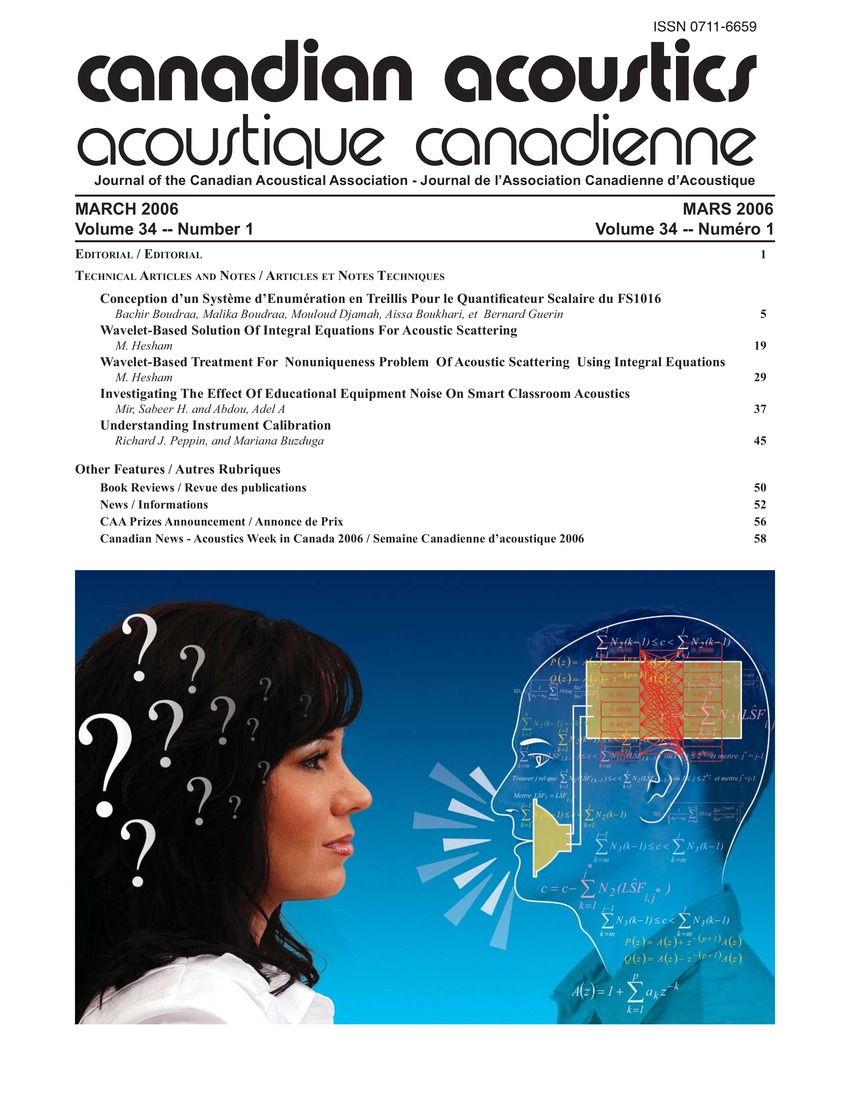Conception d'un système d'enumération en treillis pour le quantificateur scalaire du FS1016
Mots-clés :
Algorithms, Bit error rate, Signal processing, Spectrum analysis, Speech coding, Vector quantization, CELP FS1016, Enumeration algorithm, Line Spectrum Frequencies (LSF), Speech signalRésumé
Le but recherché par cette étude est la diminution du débit observé dans le codeur de parole nommé CELP FS1016 (standard développé par le département de la défense des Etats Unis d’Amérique “DoD”). Plus précisément, on s’est intéressé à la quantification des coefficients LSF (Line Spectrum Frequencies). Dans le standard CELP FS1016, ces coefficients sont calculés pour chaque trame de 30 ms et sont codés sur 34 bits après avoir subi une quantification scalaire. Nous avons jugé ce débit élevé et nous proposons d’appliquer une méthode d’énumération en treillis visant la diminution de celui-ci. Pour cela, nous avons d’abord effectué une analyse fine des différentes combinaisons données par les tables de la quantification initialement employée. L’analyse a révélé que cette quantification n’était pas optimale. En effet, nous avons trouvé qu’il y avait un nombre important de vecteurs LSF qui ne seront jamais utilisés car rendant le filtre de synthèse instable. Nous avons donc exploité l’ordonnancement naturel des coefficients LSF pour appliquer un système d’énumération en treillis pour ce quantificateur scalaire sans changer ses tables. On est parvenu ainsi à réduire le nombre de bits alloués aux coefficients LSF de 34 bits à 30 bits. Ainsi, une distorsion spectrale équivalente a été obtenue en utilisant soit le quantificateur classique ou en appliquant le système d’énumération en treillis que nous proposons. Cependant, ce dernier a l’avantage de permettre un gain en débit de 4 bits/trame.Fichiers supplémentaires
Publié-e
Comment citer
Numéro
Rubrique
Licence
Author Licensing Addendum
This Licensing Addendum ("Addendum") is entered into between the undersigned Author(s) and Canadian Acoustics journal published by the Canadian Acoustical Association (hereinafter referred to as the "Publisher"). The Author(s) and the Publisher agree as follows:
-
Retained Rights: The Author(s) retain(s) the following rights:
- The right to reproduce, distribute, and publicly display the Work on the Author's personal website or the website of the Author's institution.
- The right to use the Work in the Author's teaching activities and presentations.
- The right to include the Work in a compilation for the Author's personal use, not for sale.
-
Grant of License: The Author(s) grant(s) to the Publisher a worldwide exclusive license to publish, reproduce, distribute, and display the Work in Canadian Acoustics and any other formats and media deemed appropriate by the Publisher.
-
Attribution: The Publisher agrees to include proper attribution to the Author(s) in all publications and reproductions of the Work.
-
No Conflict: This Addendum is intended to be in harmony with, and not in conflict with, the terms and conditions of the original agreement entered into between the Author(s) and the Publisher.
-
Copyright Clause: Copyright on articles is held by the Author(s). The corresponding Author has the right to grant on behalf of all Authors and does grant on behalf of all Authors, a worldwide exclusive license to the Publisher and its licensees in perpetuity, in all forms, formats, and media (whether known now or created in the future), including but not limited to the rights to publish, reproduce, distribute, display, store, translate, create adaptations, reprints, include within collections, and create summaries, extracts, and/or abstracts of the Contribution.


